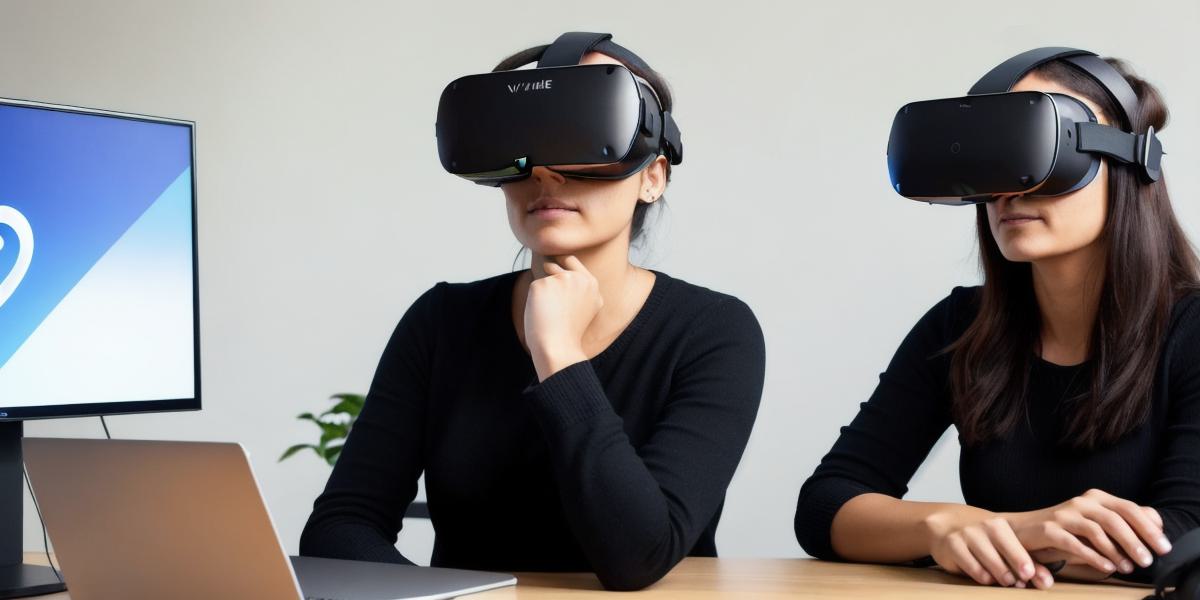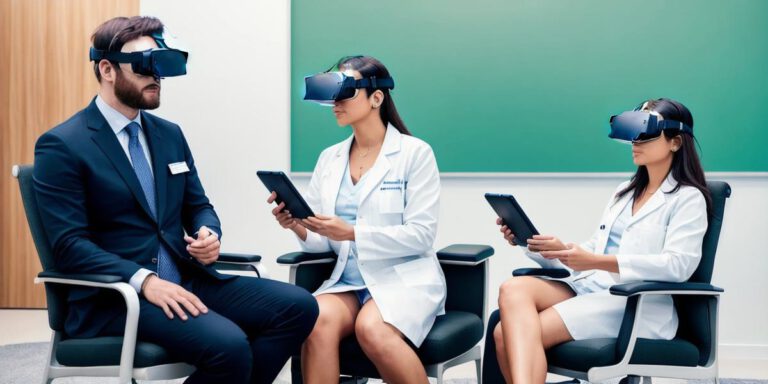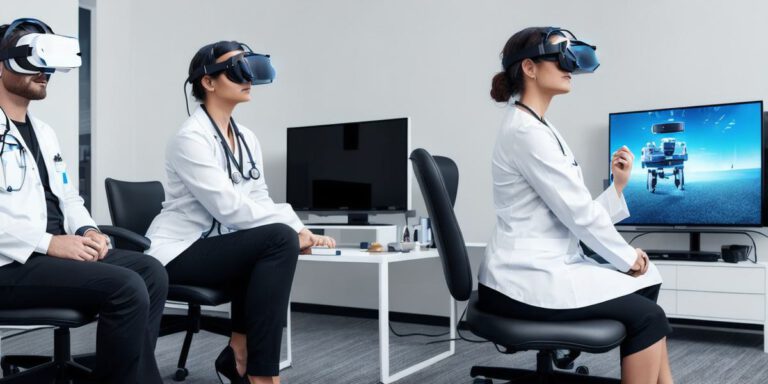Virtual Reality for Teletherapy: Transforming Mental Health Treatment in the Digital Era

In the modern world, technology has revolutionized many aspects of our lives, including healthcare. One such area is mental health treatment, which has seen a significant shift towards telemedicine in recent years. Virtual reality (VR) technology has emerged as one of the most promising tools for delivering effective and engaging teletherapy sessions.
Virtual Reality for Teletherapy: A Game-Changer in Mental Health Treatment
Teletherapy is the use of technology to deliver mental health services remotely. It has gained immense popularity due to its ability to make therapy more accessible, affordable, and convenient for patients. However, it also poses some challenges, such as limited interaction between patients and therapists, lack of engagement, and difficulty in simulating real-life scenarios.
Virtual reality technology offers a solution to these challenges by providing an immersive and interactive experience that can enhance the effectiveness of teletherapy sessions. VR allows therapists to create virtual environments that mimic real-life situations, such as phobias, anxiety disorders, and post-traumatic stress disorder (PTSD). This technology enables patients to safely and effectively confront their fears in a controlled environment, leading to better outcomes.
Case Studies: The Benefits of Virtual Reality in Teletherapy
Several studies have demonstrated the effectiveness of VR in teletherapy. One such study conducted by the University of Southern California found that VR exposure therapy was as effective as traditional in-person therapy for treating PTSD in veterans. Another study published in the Journal of Medical Internet Research found that VR exposure therapy was significantly more effective than cognitive behavioral therapy (CBT) in treating social anxiety disorder.
Virtual reality technology has also been shown to increase patient engagement and motivation during teletherapy sessions. A study published in the Journal of Consulting and Clinical Psychology found that patients who received VR-assisted therapy were more engaged and motivated than those who received traditional teletherapy.
Real-life Examples: How Virtual Reality is Transforming Mental Health Treatment
Virtual reality technology is already being used to transform mental health treatment in several ways. For example, the company Reverb Medical has developed a VR system that enables surgeons to perform complex procedures remotely, leading to improved patient outcomes and reduced costs. Similarly, the startup MindVR is using VR technology to deliver therapy for anxiety disorders, depression, and PTSD.
In conclusion, virtual reality technology offers immense potential for delivering effective and engaging teletherapy sessions in mental health treatment. The immersive and interactive nature of VR enables therapists to simulate real-life scenarios and provide safe and controlled exposure to patients, leading to better outcomes. As more research and studies are conducted on this technology, we can expect to see it becoming an integral part of mental health treatment in the digital era.
FAQs:
- What is teletherapy?
Teletherapy is the use of technology to deliver mental health services remotely. - How does virtual reality enhance teletherapy?
Virtual reality provides an immersive and interactive experience that can enhance the effectiveness of teletherapy sessions by simulating real-life scenarios and providing safe and controlled exposure to patients. - What are some benefits of using virtual reality in teletherapy?
Virtual reality technology has been shown to increase patient engagement, motivation, and effectiveness in treating mental health disorders. - Are there any limitations to using virtual reality in teletherapy?
While virtual reality technology offers several benefits, it also poses some challenges such as limited interaction between patients and therapists and difficulty in simulating real-life scenarios.








